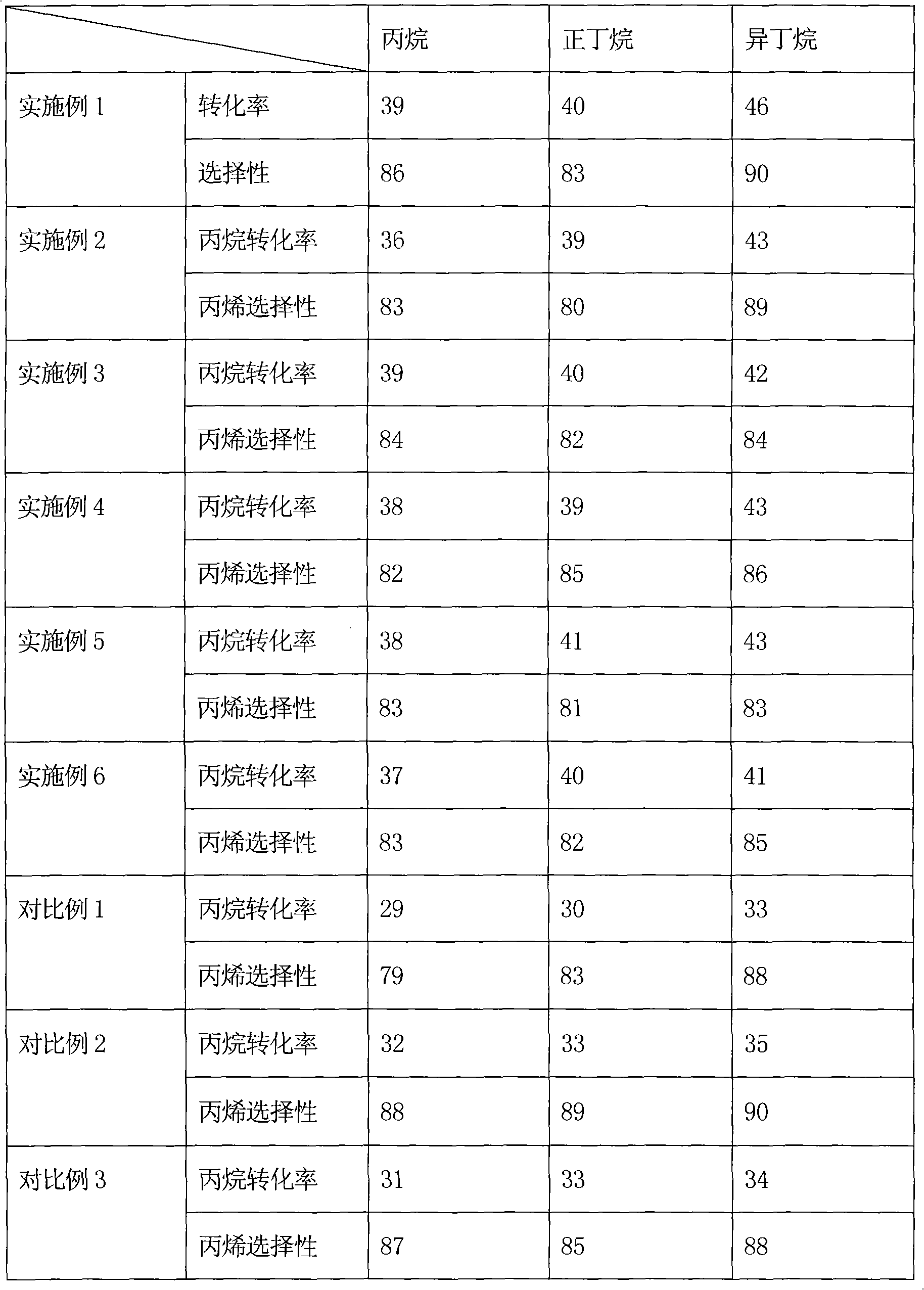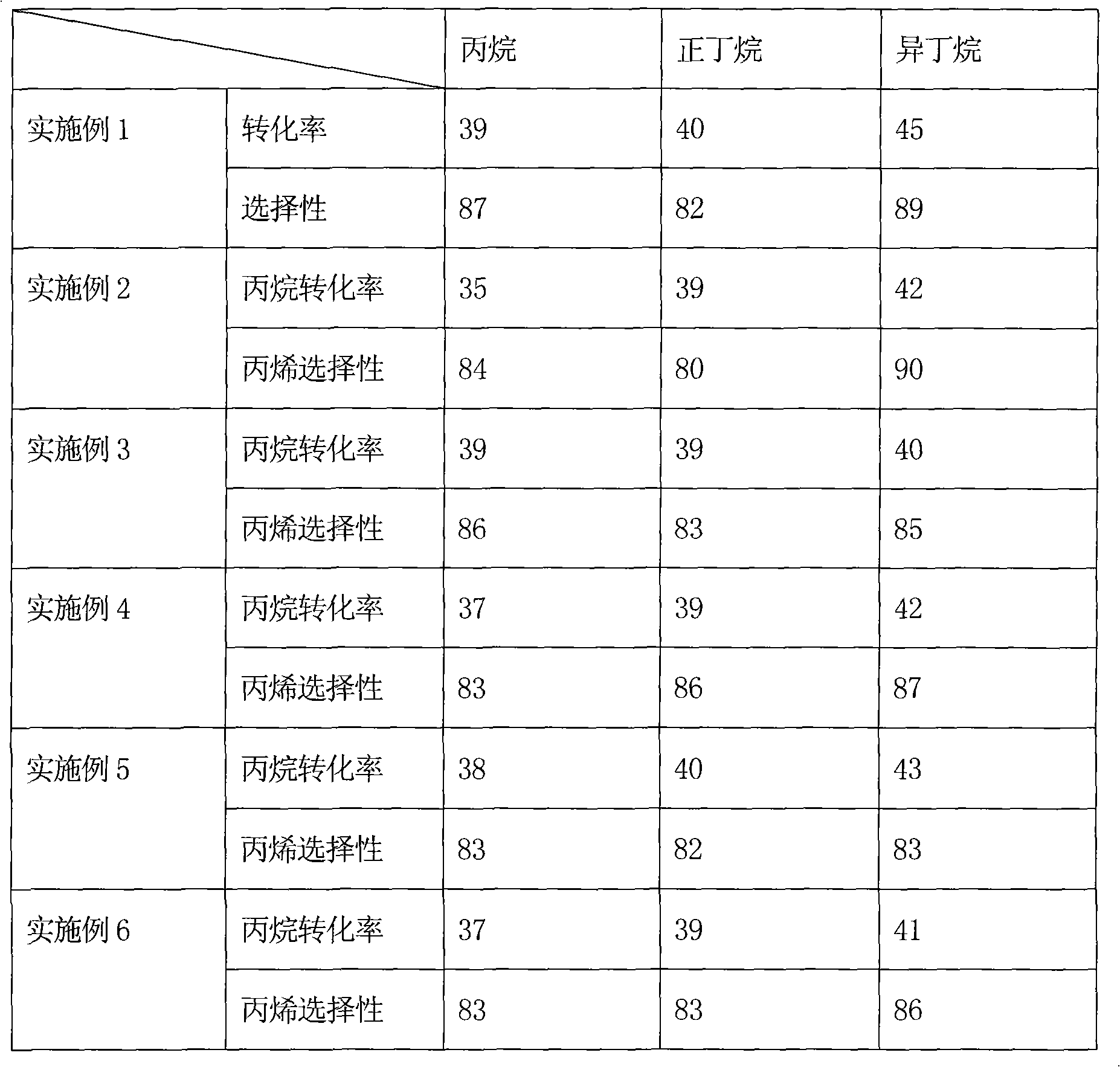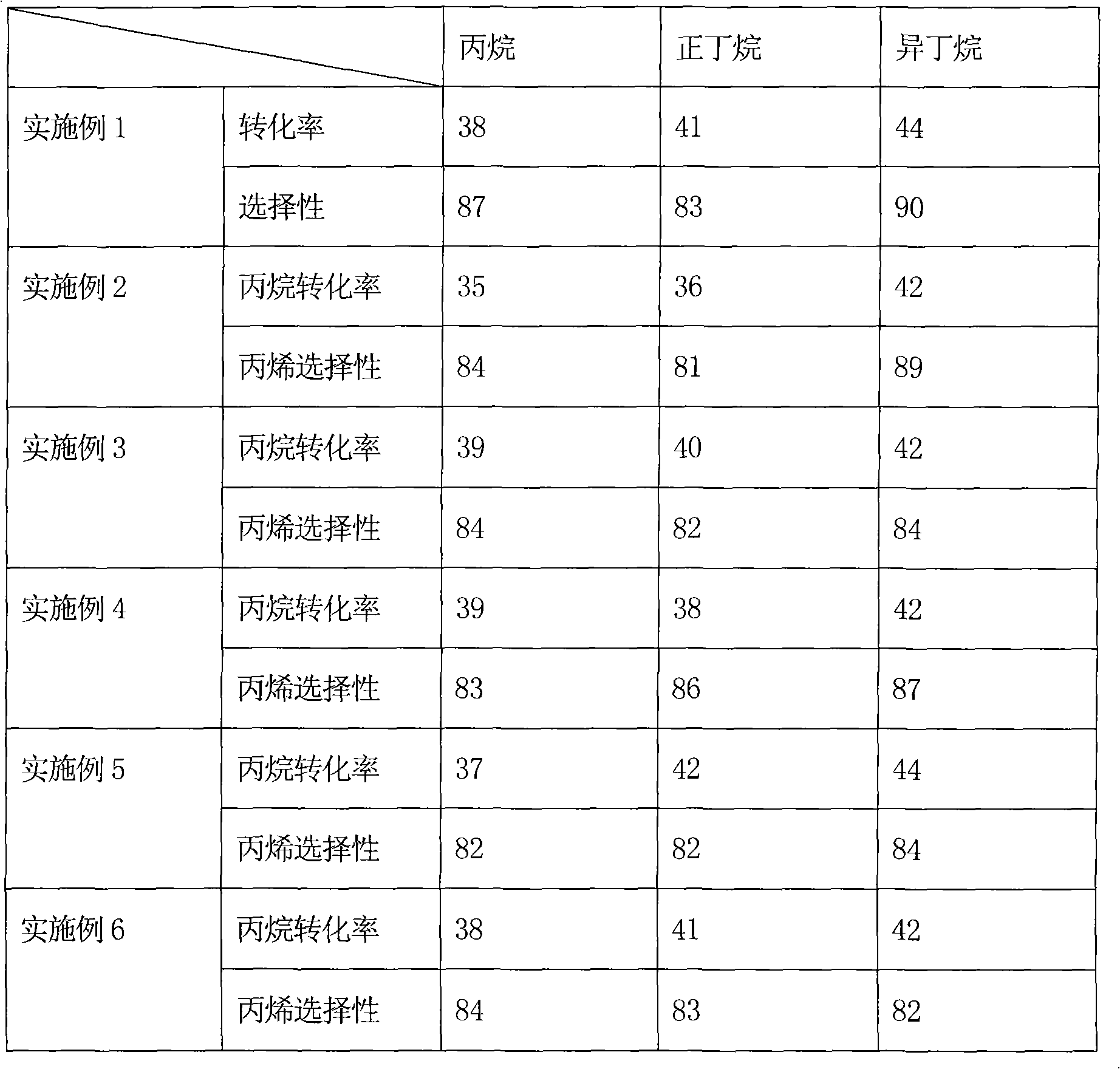Catalyst for generating high-value olefins from liquefied petroleum gas and preparation method and application thereof
A liquefied gas and catalyst technology, applied in the field of catalysts for producing high-value olefins from liquefied petroleum gas and its preparation and application, to achieve high conversion and selectivity, improve selectivity, and simplify the production process
- Summary
- Abstract
- Description
- Claims
- Application Information
AI Technical Summary
Problems solved by technology
Method used
Image
Examples
Embodiment 1
[0024] 67.2 grams of pseudo-boehmite, 31% of alumina content, 200 ml of valence water, stirred for 2 hours to form a paste, added 16.05 grams of chromium nitrate and stirred for 1 hour, then added 1.59 grams of lanthanum nitrate and stirred for one hour, then added 2.38 grams of Sodium silicate, stirred for 30 minutes, added 7ml aluminum sol, the content was 20%. Adjust the pH value to 3 with concentrated hydrochloric acid, continue to stir for 2 hours, age for 2 hours, and dry at 120°C for 10 hours. Rapidly raise the temperature to 500° C. under a nitrogen atmosphere and maintain it for 5 hours, and the linear velocity of nitrogen is 100 cm / min. Then switch nitrogen to air, continue to heat up to 700°C and keep it for 1 hour, then cool down naturally. The specific surface area of the catalytic catalyst screened at 40-80 mesh is 146m 2 / g, the apparent bulk density is 0.85.
Embodiment 2
[0026] Take 10.85 grams of kaolin and 33 grams of pseudo-boehmite, add 200 ml of water, stir for 2 hours to form a paste, add 16.05 grams of chromium nitrate and stir for 1 hour, then add 1.59 grams of lanthanum nitrate and stir for one hour, then add 2.38 grams of sodium silicate, Stir for 30 minutes, add 7ml aluminum sol, the content is 20%. Adjust the pH value to 3 with concentrated hydrochloric acid, continue to stir for 2 hours, age for 2 hours, and dry at 120°C for 10 hours. Rapidly raise the temperature to 500° C. under a nitrogen atmosphere and maintain it for 5 hours, and the linear velocity of nitrogen is 100 cm / min. Then switch nitrogen to air, continue to heat up to 700°C and keep it for 1 hour, then cool down naturally. The specific surface area of the catalytic catalyst screened at 40-80 mesh is 146m 2 / g, the apparent bulk density is 0.85.
Embodiment 3
[0028] Add 67.2 grams of pseudo-boehmite with an alumina content of 31%, add 200ml of water, stir for 2 hours to form a paste, add 16.05 grams of chromium nitrate and stir for 1 hour, then add 1.59 grams of cerium nitrate and stir for one hour, then add 2.38 grams Sodium silicate, stirred for 30 minutes, added 7ml aluminum sol, the content was 20%. Adjust the pH value to 3 with concentrated hydrochloric acid, continue to stir for 2 hours, age for 2 hours, and dry at 120°C for 10 hours. Rapidly raise the temperature to 500° C. under a nitrogen atmosphere and maintain it for 5 hours, and the linear velocity of nitrogen is 100 cm / min. Then switch nitrogen to air, continue to heat up to 700°C and keep it for 1 hour, then cool down naturally. The specific surface area of the catalytic catalyst screened at 40-80 mesh is 146m 2 / g, the apparent bulk density is 0.85.
PUM
| Property | Measurement | Unit |
|---|---|---|
| Specific surface area | aaaaa | aaaaa |
Abstract
Description
Claims
Application Information
 Login to view more
Login to view more - R&D Engineer
- R&D Manager
- IP Professional
- Industry Leading Data Capabilities
- Powerful AI technology
- Patent DNA Extraction
Browse by: Latest US Patents, China's latest patents, Technical Efficacy Thesaurus, Application Domain, Technology Topic.
© 2024 PatSnap. All rights reserved.Legal|Privacy policy|Modern Slavery Act Transparency Statement|Sitemap



